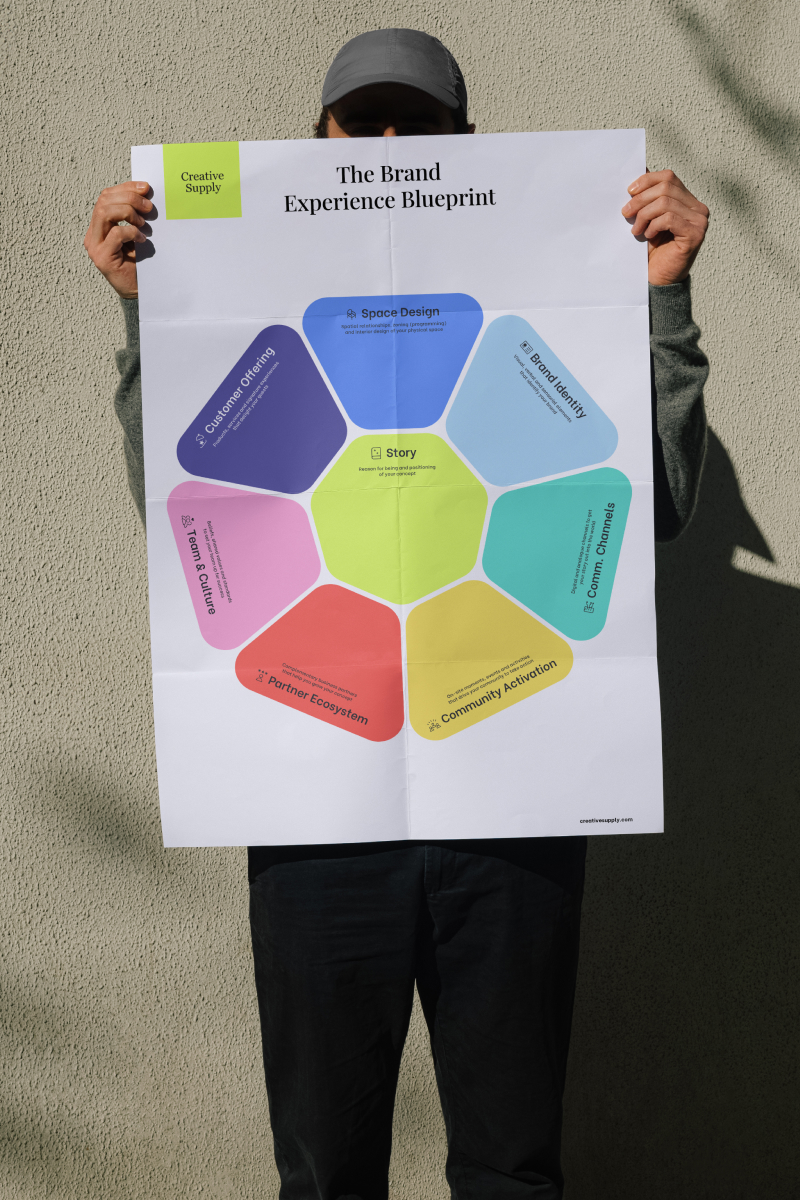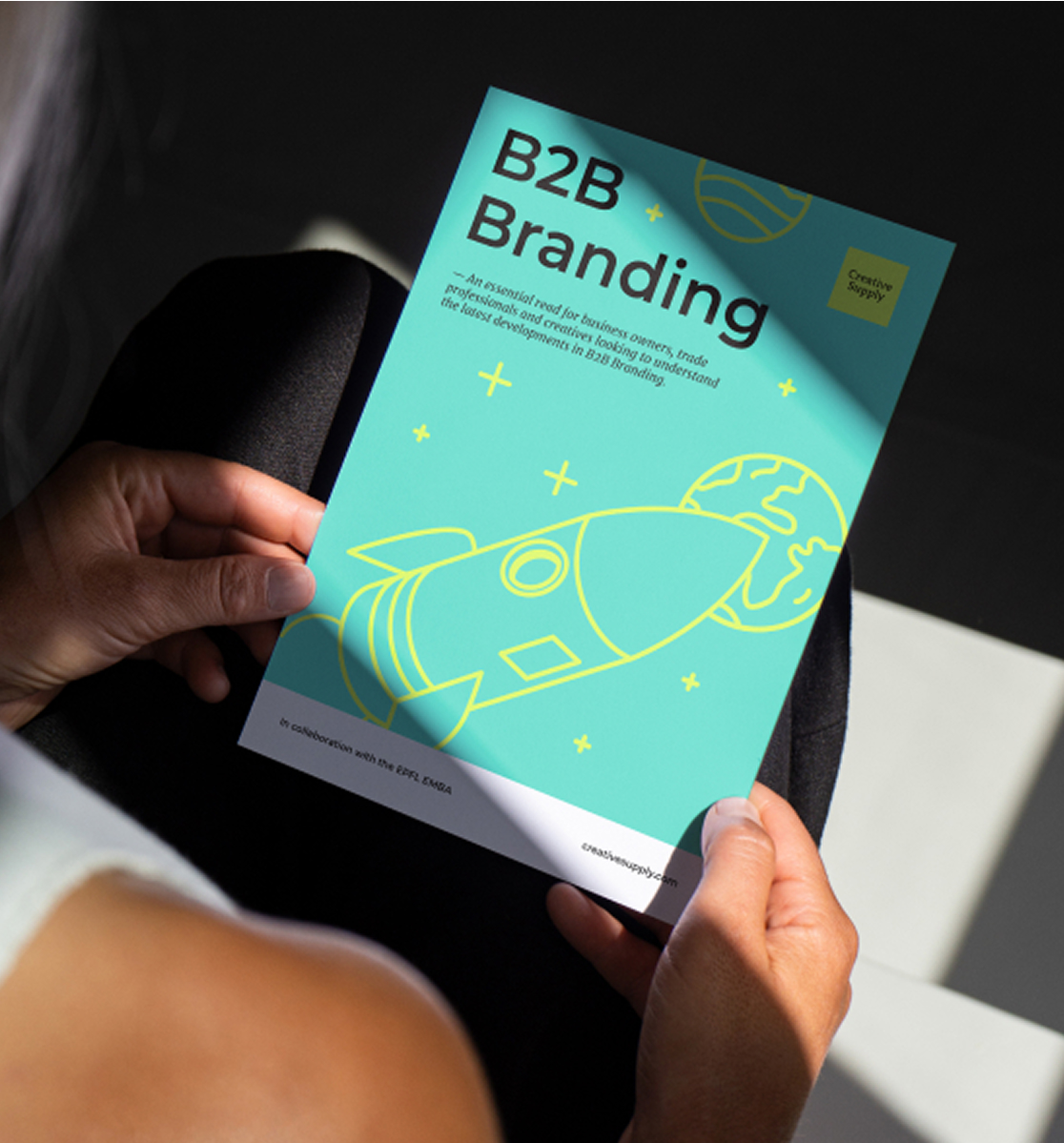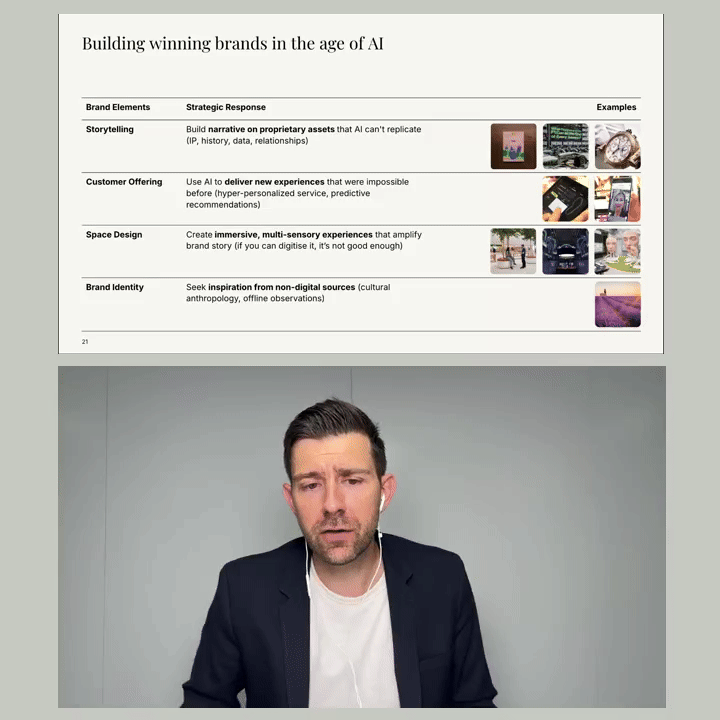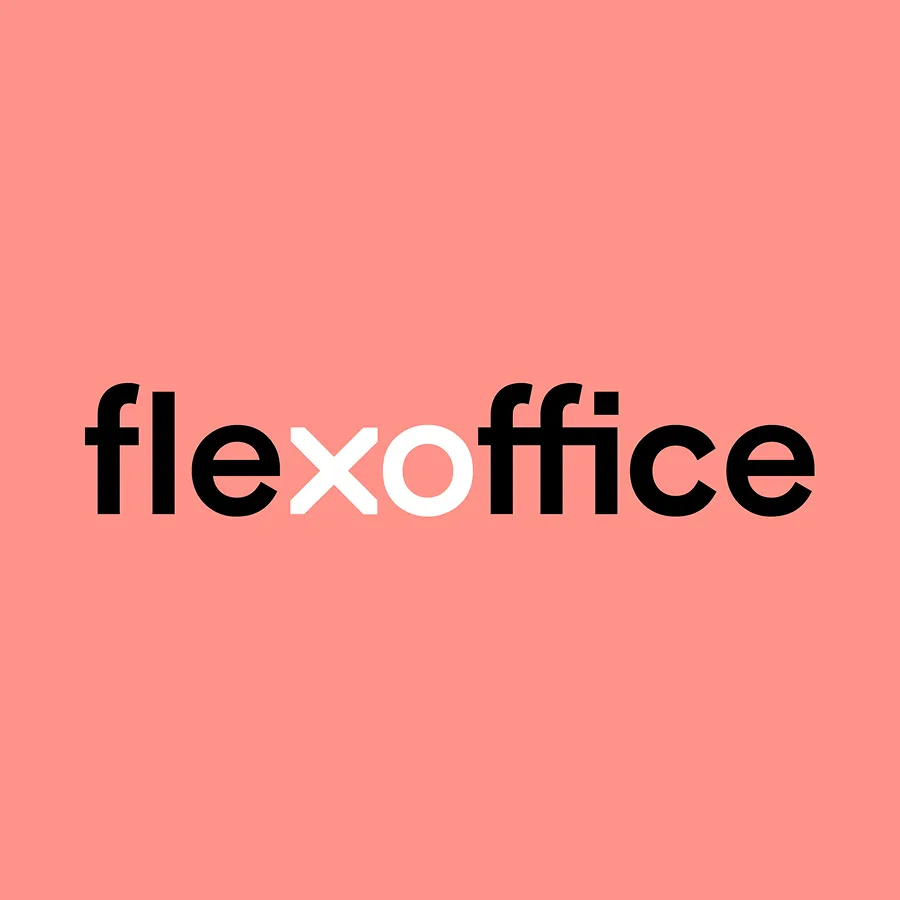Why a good story is imperative for your B2B brand
Just knowing the mission and purpose of your brand isn’t enough. You need to be able to communicate it in a coherent, enticing and relatable manner to draw audiences in. In this article we share with you what makes a compelling narrative.

While the purpose of the brand audit is to present the information needed to start working on new branding elements, the purpose of the brand story is to organise the information in order to create a coherent narrative that will carry the brand. A brand story:
- Explains the context around the brand’s origin and the trigger pushing it to challenge the status quo.
- Communicates an organisation’s vision, benefits and values in a memorable and emotional way.
- Helps establish the role of a brand amidst its competition, the market and the world at large.
- Cannot be copied. In the context of product commoditisation, ever-shorter product development cycles and patent infringement, a brand story offers B2B companies a resilient way to assert their individuality.

The valuable advantage of a brand story is this: it cannot be copied.
Telling the right story for your B2B business
Digitalisation, globalisation and commoditisation are just a few of the trends prompting companies to adapt their narrative so their clients and business partners understand what they stand for and where they are going. In this sense, the brand story also acts as a “stable agent” in periods of organisational transition. Take Lift, for example, a Geneva-based organisation we helped update its brand narrative to better reflect its role and ambitions. Originally billed as a yearly tech conference, Lift has since grown to become a major player in the field of open innovation. The story we developed frames Lift as an international organisation promoting open-innovation as a positive change driver for business and society rather than as an events organiser. This change in narrative has contributed to Lift being increasingly seen as a thought-leader in the industry.


Brand storytelling and advertising are not the same. To use a metaphor, advertising is to a brand story as an episode is to a series.
Crafting a compelling narrative
A good brand story acts as a bridge between a brand and its audience. Note that brand storytelling is often confused with advertising. They are not the same. To use a metaphor, advertising is to a brand story as an episode is to a series. There are multiple ways to build a good brand story. To get started, you can use our Brand Story Canvas™, a visual map of the seven elements that make up a brand story, from context to plot to hero (or heroine).
First, understanding the role of the brand (brand ideal) in the story is absolutely paramount. Take the IEM Group, leader in parking solutions. They aim to stand for “Innovative Parking Solutions for Smart Cities”. Every word of this phrase has been given careful thought: “innovative parking solutions” points to something more complex and profound than plain parking meter, and also means that IEM can help their “smart city” clients find a “solution” to their problem. “Smart cities”, in this context, serves simultaneously as a compliment to the customer, an aspiration for the future, and an aspiration for the company “to make cities smarter”. The reasoning behind the company’s brand strategy is simple, as Director Philippe Menoud explains: “If we help cities understand how our parking management platform can help ease their mobility issues, we are more likely to be able to sell our products to them.”
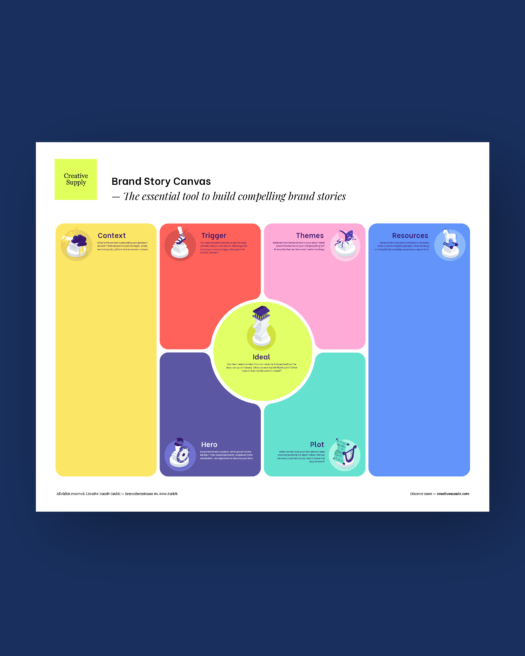

Telling a story that never ends
To build a strong following, brands must tell stories their audience can adhere to – in the most enduring way possible. You want your customers to feel engaged, all the time, without having to reinvent the wheel every year. IBM is a good example of this. The tech company has been centring its story around the idea of building a smarter planet for years. And since the planet can always get smarter, the story will never end. Once you have a good hold on your company’s narrative, it becomes the foundation for all your branding assets and sets the tone for future communications. Now you can start building content on top.
Why a good story is imperative for your B2B brand



Why a good story is imperative for your B2B brand
Just knowing the mission and purpose of your brand isn’t enough. You need to be able to communicate it in a coherent, enticing and relatable manner to draw audiences in. In this article we share with you what makes a compelling narrative.
While the purpose of the brand audit is to present the information needed to start working on new branding elements, the purpose of the brand story is to organise the information in order to create a coherent narrative that will carry the brand. A brand story:
- Explains the context around the brand’s origin and the trigger pushing it to challenge the status quo.
- Communicates an organisation’s vision, benefits and values in a memorable and emotional way.
- Helps establish the role of a brand amidst its competition, the market and the world at large.
- Cannot be copied. In the context of product commoditisation, ever-shorter product development cycles and patent infringement, a brand story offers B2B companies a resilient way to assert their individuality.

The valuable advantage of a brand story is this: it cannot be copied.
Telling the right story for your B2B business
Digitalisation, globalisation and commoditisation are just a few of the trends prompting companies to adapt their narrative so their clients and business partners understand what they stand for and where they are going. In this sense, the brand story also acts as a “stable agent” in periods of organisational transition. Take Lift, for example, a Geneva-based organisation we helped update its brand narrative to better reflect its role and ambitions. Originally billed as a yearly tech conference, Lift has since grown to become a major player in the field of open innovation. The story we developed frames Lift as an international organisation promoting open-innovation as a positive change driver for business and society rather than as an events organiser. This change in narrative has contributed to Lift being increasingly seen as a thought-leader in the industry.


Brand storytelling and advertising are not the same. To use a metaphor, advertising is to a brand story as an episode is to a series.
Crafting a compelling narrative
A good brand story acts as a bridge between a brand and its audience. Note that brand storytelling is often confused with advertising. They are not the same. To use a metaphor, advertising is to a brand story as an episode is to a series. There are multiple ways to build a good brand story. To get started, you can use our Brand Story Canvas™, a visual map of the seven elements that make up a brand story, from context to plot to hero (or heroine).
First, understanding the role of the brand (brand ideal) in the story is absolutely paramount. Take the IEM Group, leader in parking solutions. They aim to stand for “Innovative Parking Solutions for Smart Cities”. Every word of this phrase has been given careful thought: “innovative parking solutions” points to something more complex and profound than plain parking meter, and also means that IEM can help their “smart city” clients find a “solution” to their problem. “Smart cities”, in this context, serves simultaneously as a compliment to the customer, an aspiration for the future, and an aspiration for the company “to make cities smarter”. The reasoning behind the company’s brand strategy is simple, as Director Philippe Menoud explains: “If we help cities understand how our parking management platform can help ease their mobility issues, we are more likely to be able to sell our products to them.”


Telling a story that never ends
To build a strong following, brands must tell stories their audience can adhere to – in the most enduring way possible. You want your customers to feel engaged, all the time, without having to reinvent the wheel every year. IBM is a good example of this. The tech company has been centring its story around the idea of building a smarter planet for years. And since the planet can always get smarter, the story will never end. Once you have a good hold on your company’s narrative, it becomes the foundation for all your branding assets and sets the tone for future communications. Now you can start building content on top.
DownloadWhy a good story is imperative for your B2B brand
While the purpose of the brand audit is to present the information needed to start working on new branding elements, the purpose of the brand story is to organise the information in order to create a coherent narrative that will carry the brand. A brand story:
- Explains the context around the brand’s origin and the trigger pushing it to challenge the status quo.
- Communicates an organisation’s vision, benefits and values in a memorable and emotional way.
- Helps establish the role of a brand amidst its competition, the market and the world at large.
- Cannot be copied. In the context of product commoditisation, ever-shorter product development cycles and patent infringement, a brand story offers B2B companies a resilient way to assert their individuality.

The valuable advantage of a brand story is this: it cannot be copied.
Telling the right story for your B2B business
Digitalisation, globalisation and commoditisation are just a few of the trends prompting companies to adapt their narrative so their clients and business partners understand what they stand for and where they are going. In this sense, the brand story also acts as a “stable agent” in periods of organisational transition. Take Lift, for example, a Geneva-based organisation we helped update its brand narrative to better reflect its role and ambitions. Originally billed as a yearly tech conference, Lift has since grown to become a major player in the field of open innovation. The story we developed frames Lift as an international organisation promoting open-innovation as a positive change driver for business and society rather than as an events organiser. This change in narrative has contributed to Lift being increasingly seen as a thought-leader in the industry.


Brand storytelling and advertising are not the same. To use a metaphor, advertising is to a brand story as an episode is to a series.
Crafting a compelling narrative
A good brand story acts as a bridge between a brand and its audience. Note that brand storytelling is often confused with advertising. They are not the same. To use a metaphor, advertising is to a brand story as an episode is to a series. There are multiple ways to build a good brand story. To get started, you can use our Brand Story Canvas™, a visual map of the seven elements that make up a brand story, from context to plot to hero (or heroine).
First, understanding the role of the brand (brand ideal) in the story is absolutely paramount. Take the IEM Group, leader in parking solutions. They aim to stand for “Innovative Parking Solutions for Smart Cities”. Every word of this phrase has been given careful thought: “innovative parking solutions” points to something more complex and profound than plain parking meter, and also means that IEM can help their “smart city” clients find a “solution” to their problem. “Smart cities”, in this context, serves simultaneously as a compliment to the customer, an aspiration for the future, and an aspiration for the company “to make cities smarter”. The reasoning behind the company’s brand strategy is simple, as Director Philippe Menoud explains: “If we help cities understand how our parking management platform can help ease their mobility issues, we are more likely to be able to sell our products to them.”


Telling a story that never ends
To build a strong following, brands must tell stories their audience can adhere to – in the most enduring way possible. You want your customers to feel engaged, all the time, without having to reinvent the wheel every year. IBM is a good example of this. The tech company has been centring its story around the idea of building a smarter planet for years. And since the planet can always get smarter, the story will never end. Once you have a good hold on your company’s narrative, it becomes the foundation for all your branding assets and sets the tone for future communications. Now you can start building content on top.
